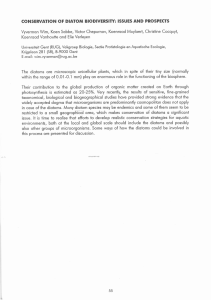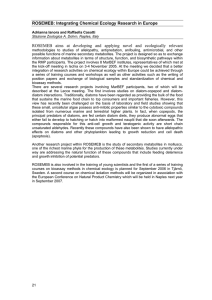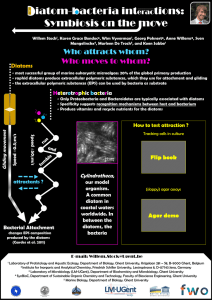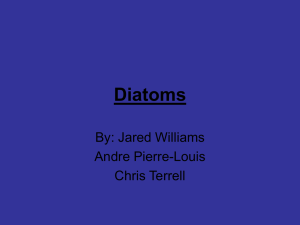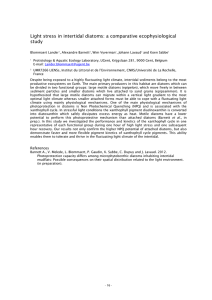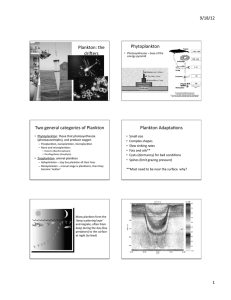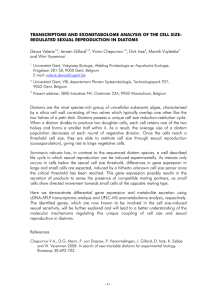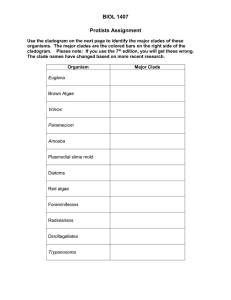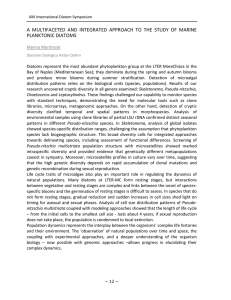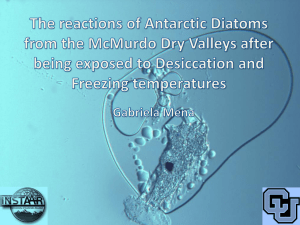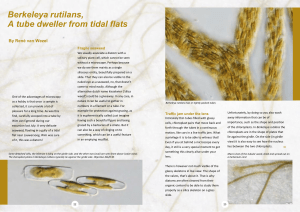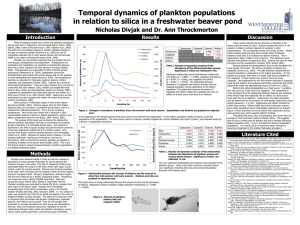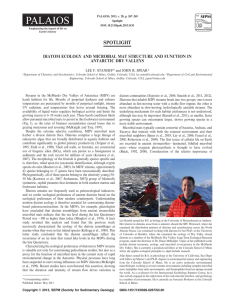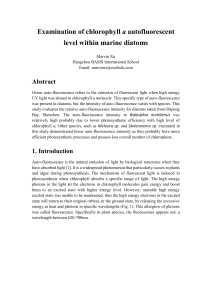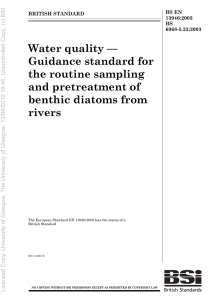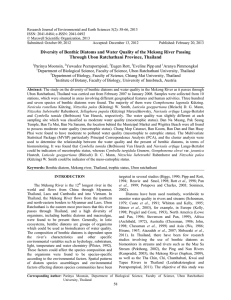Why are diatoms so successful in the modern marine plankton?
advertisement
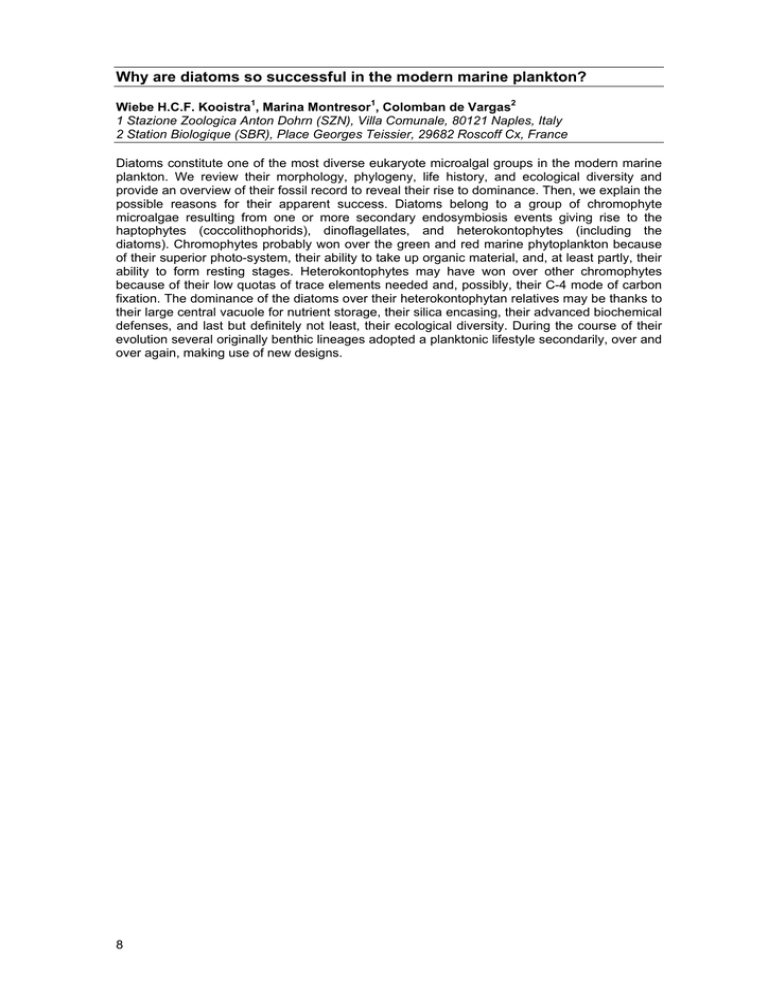
Why are diatoms so successful in the modern marine plankton? Wiebe H.C.F. Kooistra1, Marina Montresor1, Colomban de Vargas2 1 Stazione Zoologica Anton Dohrn (SZN), Villa Comunale, 80121 Naples, Italy 2 Station Biologique (SBR), Place Georges Teissier, 29682 Roscoff Cx, France Diatoms constitute one of the most diverse eukaryote microalgal groups in the modern marine plankton. We review their morphology, phylogeny, life history, and ecological diversity and provide an overview of their fossil record to reveal their rise to dominance. Then, we explain the possible reasons for their apparent success. Diatoms belong to a group of chromophyte microalgae resulting from one or more secondary endosymbiosis events giving rise to the haptophytes (coccolithophorids), dinoflagellates, and heterokontophytes (including the diatoms). Chromophytes probably won over the green and red marine phytoplankton because of their superior photo-system, their ability to take up organic material, and, at least partly, their ability to form resting stages. Heterokontophytes may have won over other chromophytes because of their low quotas of trace elements needed and, possibly, their C-4 mode of carbon fixation. The dominance of the diatoms over their heterokontophytan relatives may be thanks to their large central vacuole for nutrient storage, their silica encasing, their advanced biochemical defenses, and last but definitely not least, their ecological diversity. During the course of their evolution several originally benthic lineages adopted a planktonic lifestyle secondarily, over and over again, making use of new designs. 8

